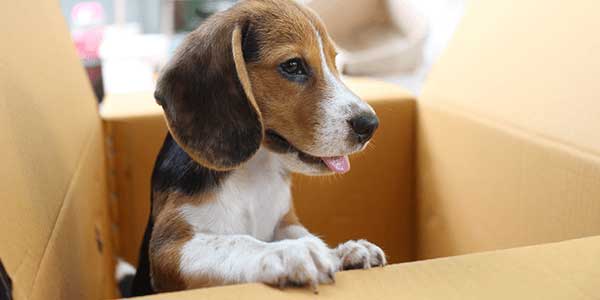Tips For Reducing Your Dog's Anxiety - Bully Sticks Direct
May 28, 2022
All dog owners will agree that their furry friend has experienced some anxiety at one point or another. Dogs can feel anxious just like humans, and it's up to us to provide the care they need to be healthy physically and mentally. To understand how to prevent or reduce our dog's anxiety, we must first understand its underlying cause. Let's look at what may be causing your dog to be anxious and how you can help your four-legged friend feel more content.
Fear-Based Canine Anxiety
Fear is a factor of canine anxiety, and paying attention to your dog's reactions to the world around them will help you root out the problem. Loud noises such as thunder and fireworks are typical sources of stress for dogs as their hearing is more sensitive than ours. Your dog could be afraid of quick movements, strangers, or even panic at your doorbell ringing.
Separation Anxiety In Canines
One of the most prevalent forms of anxiety in dogs is separation anxiety. Research shows that around 14% of canines experience this form of stress, leading to negative behaviors. Separation anxiety most commonly causes dogs to bark excessively, become destructive, and soil the house.
Age-Related Canine Anxiety
Like humans, dogs become more anxious as they age. Age-related anxiety is typically induced by a decline in cognitive and physical function. If a dog is less mobile or experiences a loss of memory or sight, it can become anxious and nervous as it is more difficult to navigate its surroundings.
Common Signs Of Anxiety In Dogs
1)Excessive Barking
2)Aggression
3)Withdrawal/Depression
4)Urination
5)Destructive Behavior
6)Pacing
7)Restlessness
Ways To Reduce And Prevent Canine Anxiety
If you suspect your dog is experiencing anxiety, you should first consult your veterinarian, who can help you rule out any possible medical conditions. Once your furry friend has received a clean bill of health, you can consider the following ways to reduce and prevent your canine's anxiety.
Counterconditioning
A form of training, counterconditioning influences your dog's response to various stimuli to which it negatively reacts. For example, counterconditioning techniques will help reform your dog's response to the stressor if your dog paces and whines during a thunderstorm. Through desensitization, redirection, and positive reinforcement, you can train your dog to gain the confidence necessary to be less afraid.
Stick To A Routine
As creatures of habit, dogs enjoy the subtleties of a routine in their daily lives. Routines limit ambiguity in your dog's schedule, reducing anxiousness and uncertainty. Remember, routines make your dog feel more secure, and by creating a structured routine, you'll breed confidence instead of fear.
Provide An All-Natural Chewing Treat
To keep your four-legged friend occupied while you are busy or away, give them a long-lasting, all-natural treat for chewing. When your dog is engaged with its instinct to chew, he is less likely to feel stressed.



